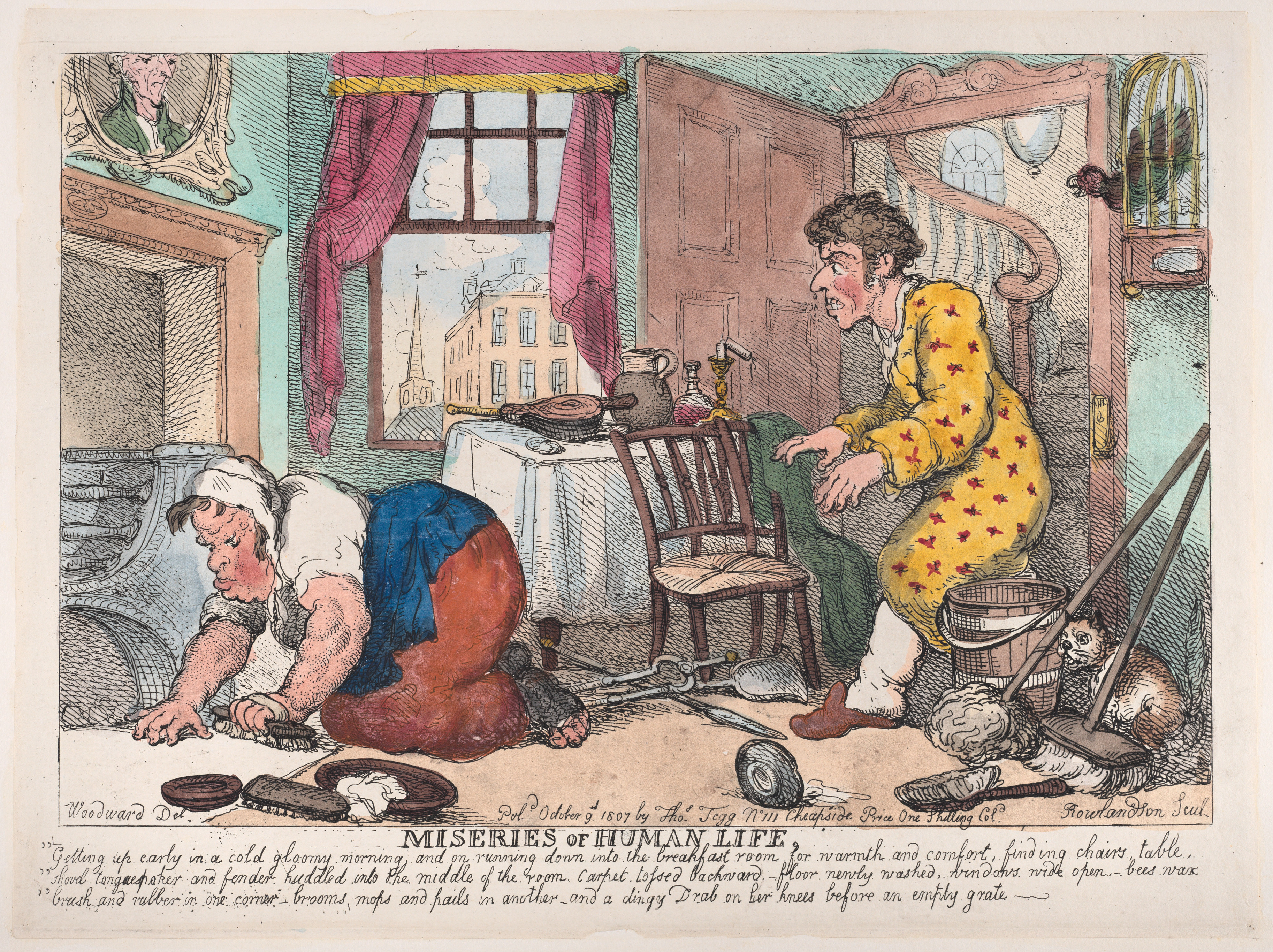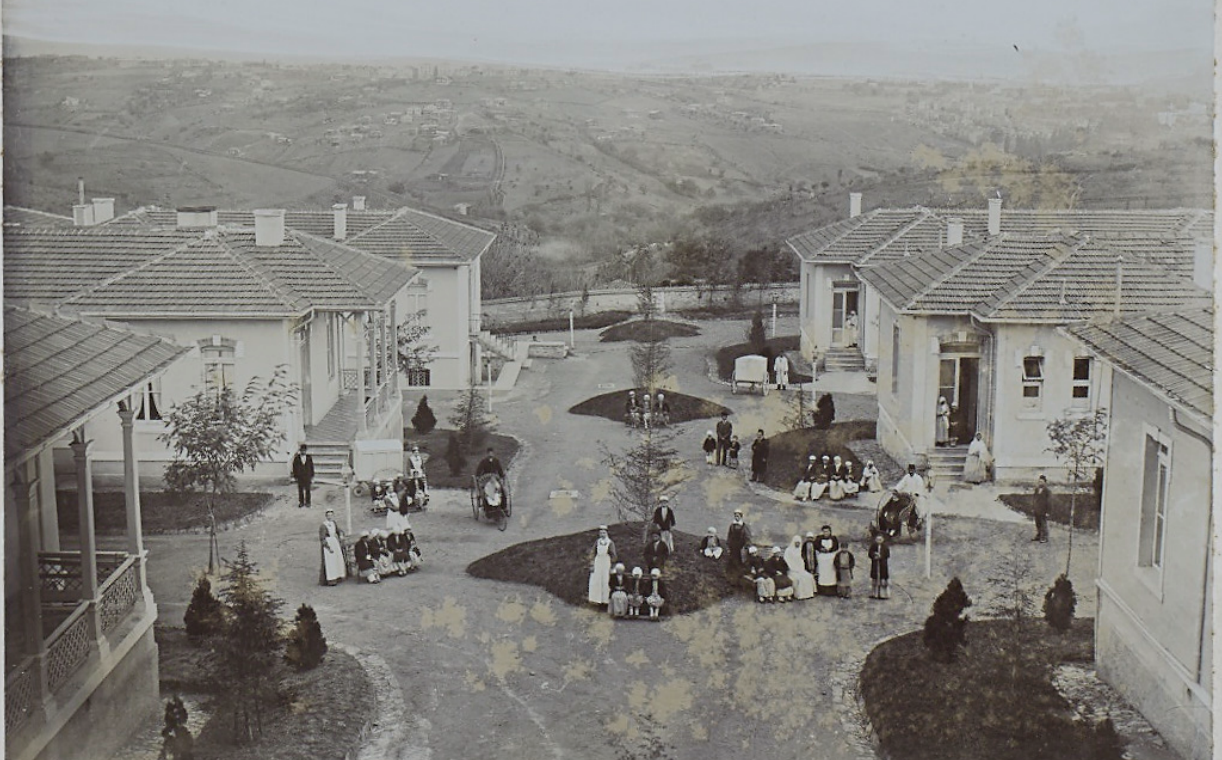PAST TALKS 2022
*Wednesday* 30 November 2022
‘DocTalks x MoMA’
9–11 AM EST, 3–5 PM CET
“In England, where fuel is plenty,
ALEKSANDR BIERIG
Harvard GSD
Respondent: Matthew Wells, The University of Manchester
![]()
"The Miseries of Human Life: Getting Up Early in a Cold Gloomy Morning...Before an Empty Grate," Thomas Rowlandson, 1807. Metropolitan Museum of Art, The Elisha Whittelsey Collection, 59.533.1987
***
Healing Landscapes:
ZEYNEP ECE SAHIN KORKAN
TU Munich
Respondent: Damla Göre, ETH Zurich
![]()
Pediatric patients and nurses during the breaktime at the garden between the pavilions of Hamidiye Etfal Hospital Yıldız Albums of Abdulhamid II, Istanbul University
‘DocTalks x MoMA’
9–11 AM EST, 3–5 PM CET
“In England, where fuel is plenty,
and its waste universal”
Household Comfort and
Thermal Abundance
in the Nineteenth Century
ALEKSANDR BIERIG
Harvard GSD
Respondent: Matthew Wells, The University of Manchester

"The Miseries of Human Life: Getting Up Early in a Cold Gloomy Morning...Before an Empty Grate," Thomas Rowlandson, 1807. Metropolitan Museum of Art, The Elisha Whittelsey Collection, 59.533.1987
There are few more indelible themes in the history of architecture than what Reyner Banham memorably named the “well-tempered environment.” Banham’s 1969 book was an earnest (if also wry) narration of the technologized interior—the equipment of heat, light, air, and water that had supposedly brought the architectural environment under control. This history was, as he himself admitted, more interested in ends rather than means, with the final provision of comfort rather than the systems of power that provided the critical external supports to interior environments. But where had such expectations come from, to begin with?
This presentation will outline an alternate genealogy of the well-tempered environment by returning to a moment before Banham’s history, when the distribution of comfort was more uneven and far less certain. Its focus is on a particular object of both technological and architectural interest: the household fireplace. Specifically, it will consider the work of early nineteenth-century engineer and writer Robert Stuart Meikleham, who composed the first English-language histories of fireplace technology in 1825 and 1845. Though Meikleham wanted to tell a story of what he called “the progress of personal and fireside comfort”—a kind of early draft of the “well-tempered environment,” chronicling the inventions of “ingenious men” like himself, Count Rumford, and Benjamin Franklin—a close reading of his work reveals a more conflicted story. Indeed, what his books reveal is not a history of technology, but rather a history of fuel; of how the comforts of the nineteenth-century British household were supported not by technical mastery, but by their anomalous use of coal. At the time, there was no shortage of resourceful cultural responses to the problem of conserving fuel—from Russian and Dutch “closed stoves” to the underfloor heating of the Chinese Kang, among many other examples discussed in Meikleham’s histories. By contrast, the fuel folkways of the English were exemplified in the national attachment to the “open hearth”—a roaring pile of coals that sent roughly ninety percent of its heat up the chimney—whose persistence could only be explained through their access to the surplus energy of fossil fuels.
This paper asks, in other words, what it would mean to tell the history of household comfort not as a one of technological control, but rather—as Meikleham and others saw it, at the time—as a story of thermal profligacy and, ultimately, failure. What would it mean for the history of architecture to retell the story of the “well-tempered environment” not from the standpoint of improving gadgets and devices, but instead from the perspective of fuel?
This presentation will outline an alternate genealogy of the well-tempered environment by returning to a moment before Banham’s history, when the distribution of comfort was more uneven and far less certain. Its focus is on a particular object of both technological and architectural interest: the household fireplace. Specifically, it will consider the work of early nineteenth-century engineer and writer Robert Stuart Meikleham, who composed the first English-language histories of fireplace technology in 1825 and 1845. Though Meikleham wanted to tell a story of what he called “the progress of personal and fireside comfort”—a kind of early draft of the “well-tempered environment,” chronicling the inventions of “ingenious men” like himself, Count Rumford, and Benjamin Franklin—a close reading of his work reveals a more conflicted story. Indeed, what his books reveal is not a history of technology, but rather a history of fuel; of how the comforts of the nineteenth-century British household were supported not by technical mastery, but by their anomalous use of coal. At the time, there was no shortage of resourceful cultural responses to the problem of conserving fuel—from Russian and Dutch “closed stoves” to the underfloor heating of the Chinese Kang, among many other examples discussed in Meikleham’s histories. By contrast, the fuel folkways of the English were exemplified in the national attachment to the “open hearth”—a roaring pile of coals that sent roughly ninety percent of its heat up the chimney—whose persistence could only be explained through their access to the surplus energy of fossil fuels.
This paper asks, in other words, what it would mean to tell the history of household comfort not as a one of technological control, but rather—as Meikleham and others saw it, at the time—as a story of thermal profligacy and, ultimately, failure. What would it mean for the history of architecture to retell the story of the “well-tempered environment” not from the standpoint of improving gadgets and devices, but instead from the perspective of fuel?
***
Healing Landscapes:
Women, Ecology and Healthcare
in the Late Ottoman Empire
ZEYNEP ECE SAHIN KORKAN
TU Munich
Respondent: Damla Göre, ETH Zurich

Pediatric patients and nurses during the breaktime at the garden between the pavilions of Hamidiye Etfal Hospital Yıldız Albums of Abdulhamid II, Istanbul University
This study examines the pavilion-style hospitals of late Ottoman Istanbul, which stood at the intersection of body politics, ecological paradigms, and the healthcare culture of the time. The 19th century witnessed numerous advancements in medical science such as the discovery of X-rays, the development of preventive healthcare, and the concept of public health, which laid the foundations for modern medicine. These developments were closely followed by the Ottoman Empire since the late Ottoman mindset was marked by the idea of modernity. In line with the great pursuit of bringing the Empire to the level of modern civilizations, fundamental improvements were made. Together with the reforms in administration, military, and education, healthcare has also been modernized. This modernization was not limited to the medical equipment or the processes of diagnosis and treatment. The spaces of medical care were also reshaped and took on a different architectural character. Hospita layouts that could provide better isolation to prevent contamination, especially the “pavilion system” which consisted of small and independent buildings arranged in a large garden at a certain distance from each other, became prevalent. Pavilion-style was adopted as the most viable plan solution for healthcare institutions in Central Europe as well as in the Ottoman Empire. This research focuses on the two major pavilion-style hospital projects realized in Istanbul under the rule of Abdülhamid II. These are Hamidiye Etfal Hospital, which was the first children’s hospital of the Empire and the new Haseki Women’s Hospital. Far from the conventional understanding, the layouts of these hospitals embraced fresh air, green areas and were surrounded by agricultural fields. It was a balanced scheme of architecture and landscaping that valued outdoor spaces as much as the enclosed ones. From a wider perspective, it was the first phase of the Antropocene and the time when the first institutional implementations of Ottoman administrators’ changing perception of nature were seen. In this context, nature began to be understood more as a commodity and a scientific object, and this thought was reacted to and challenged by Ottoman subjects in a variety of ways. On the other hand, the implementation of the pavilion-style coincided with the process of Ottoman women becoming visible in the public spaces of modern society as working and producing individuals. It was during this time that the first wave of women entered the medical profession as nurses, midwives, and caregivers in the Empire. Either as patients or employees, women were the prominent users and occupants of these new healthcare spaces that reflected the modernization of medical science as well as the transforming socio-ecological parameters and body politics on women and children.